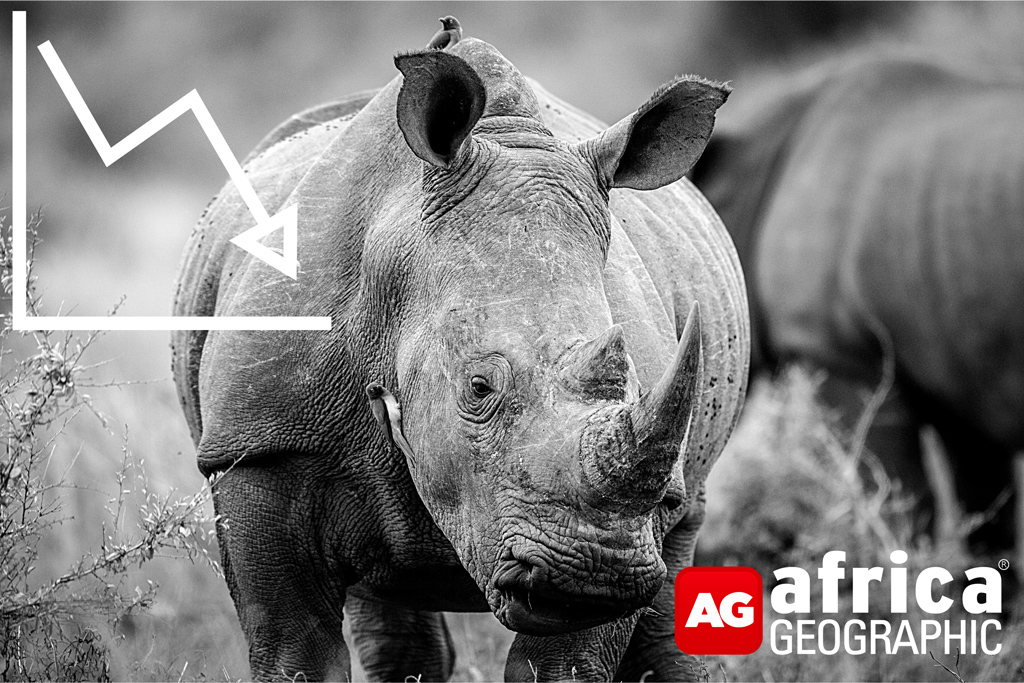SOUTH AFRICA’S RHINO HORN STOCKPILES: INTRINSIC TO ILLEGAL TRADE WHERE HAVE ALL THE RHINOS GONE? PART TWO
The EMS Foundation - 29.02.2024
Media Statement
On the 27th February 2024, Minister Barbara Creecy issued a media statement confirming that an alarming number of 397 rhino were killed in KwaZulu Natal in 2023, the highest number on record for this province. A total of 499 rhinos were killed throughout South Africa last year.
Explanations for the devastating loss of thousands of rhinos in South Africa, particularly over the past few years, were highlighted in the 2021 EMS Foundation publication of Where Have All the Rhinos Gone? We determined that the significant loss of rhinos are not only due to the illegal killing of rhinos, particularly over the past two decades but, these unacceptable numbers are also the result of: (i) poor, problematic policy and management decisions; (ii) the direct involvement of some of South Africa’s professional trophy hunters, corrupt members of the South African Police Service, some rhino breeders, crooked veterinarians, and nature conservation officials; and (iii) porous South African border control.
The second report, published today, entitled South Africa’s Rhino Horn Stockpiles: Intrinsic to Illegal Trade, provides further evidence of how South Africa’s rhino horn stockpiles are driving illegal trade in rhino horn.
The Report reminds us of the details of incidents where rhino breeders and their industry colleagues have, since the publication of the first report, been implicated in the illegal sale of hundreds of rhino horn, suspicious deaths of rhinos and in the possession of unmarked rhino horn.
We are living in the sixth extinction. It is inconceivable that the international rhino horn trade, which has been banned for 47 years, will ever be tolerated. Furthermore, we are currently witnessing the implosion of the rhino farming industry. The Report brings into sharp focus, South Africa’s pro-trade policy framework and its seemingly unwavering support for the questionable model of intensively breeding rhinos for horn production.
Apart from sending out the mixed message of the conservation of an almost extinct species versus the utilization of such, the pro-trade policy and the dehorning processes negatively affects biodiversity, including the survival of the rhino species.
Minister Creecy commended the work performed by the Directorate for Priority Crime Investigation, the HAWKS, in several regional and transnational engagements to enhance the government’s integrated approach to combat wildlife trafficking.
However, of increasing concern to us is South Africa’s pivotal role in the illegal international trade of rhino horn which is confirmed by numerous research projects and the content published in the South African Anti-Money Laundering Integrated Task Force report.
Further well-researched reports by renowned wildlife trade specialists and analysts were published and presented at CITES CoP19 in 2022 which illustrate the fact that harvested rhino horns have been diverted from rhino horn stockpiles in South Africa to become a major source for the illegal wildlife trade.
Our Report shows that official South African rhino horn stockpiles figures are conflicting, inconsistent, untrustworthy and cannot be verified.
The report highlights the fact that KwaZulu Natal is the current battlefield for the survival of rhino in South Africa. We provide updates on lengthy judicial processes involving alleged kingpins (sic), details of noteworthy convictions of wildlife criminals, arrests involving alleged perpetrators of wildlife crime, seizures of rhino horn in and from South Africa, and unresolved assassinations linked to rhino poaching investigations.
The urgent question that the South African government must answer is, why is it allowing the stockpiling of rhino horn? Particularly because, by doing so, it is de facto placing a dangerously contentious value to the horns in the vain hope that the international market will be reopened. This is in turn endangering the lives of the people who are protecting the rhinos, encouraging the black market, and bankrupting public and private reserves whilst they attempt to keep their rhinos secure.
The future of wild life, nature and our own human existence is literally under threat. What is needed is an urgent and total overhaul of policy and legislation and a totally different way of viewing wild life and restoring ecosystems and biodiversity. Given all the issues raised in our Briefing Report, the recommendations are:
1. Rather than banking on the extinction of rhinos, South Africa must embrace rhino horn stockpile destruction as an anti-poaching, anti-trafficking, and demand reduction tool to meaningfully contribute to the ethical protection of rhino populations in Africa and Asia and to mitigate their extinction. Doing so will send a strong signal that South Africa is firmly committed to preserving and protecting rhinos, and to truly ensuring their welfare and well-being.
2. By virtue of the precautionary approach, South Africa, and other CITES States Parties must act in the best interest of the conservation of the species and urgently uplist rhinos currently on Appendix II to Appendix I
To access the full report:
https://emsfoundation.org.za/south-afri ... gal-trade/






